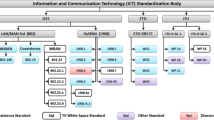
Overview
Presents a unified view of the cognitive radio technology (both theory and practice)
Offers a comprehensive treatment of state-of-the-art cognitive radio technology
Covers a wide range of topics starting from information-theoretic analysis to protocol design and optimization issues, and test-bed results
Includes contributions from world-class researchers in this area
Buy print copy
About this book
Similar content being viewed by others
Keywords
Table of contents (15 chapters)
-
Front Matter
-
Back Matter
Editors and Affiliations
Bibliographic Information
Book Title: Cognitive Wireless Communication Networks
Editors: Ekram Hossain, Vijay Bhargava
DOI: https://doi.org/10.1007/978-0-387-68832-9
Publisher: Springer New York, NY
eBook Packages: Engineering, Engineering (R0)
Copyright Information: Springer-Verlag US 2007
Hardcover ISBN: 978-0-387-68830-5Published: 26 November 2007
Softcover ISBN: 978-1-4419-4331-6Published: 04 November 2010
eBook ISBN: 978-0-387-68832-9Published: 23 October 2007
Edition Number: 1
Number of Pages: XXVIII, 440
Topics: Communications Engineering, Networks, Computer Communication Networks, Microwaves, RF and Optical Engineering, Artificial Intelligence, Computer Systems Organization and Communication Networks, Signal, Image and Speech Processing



